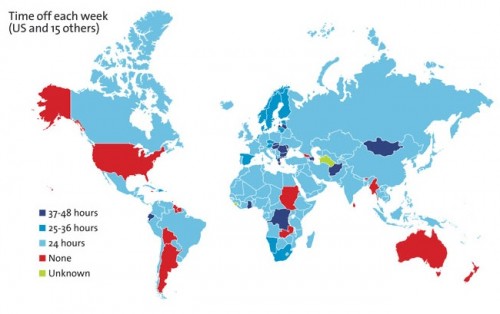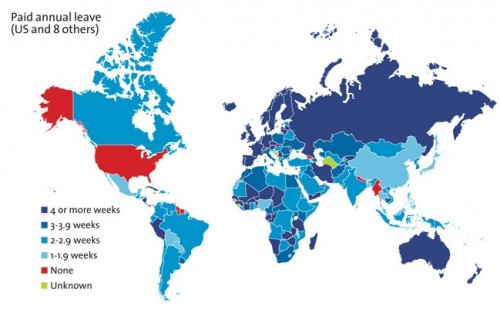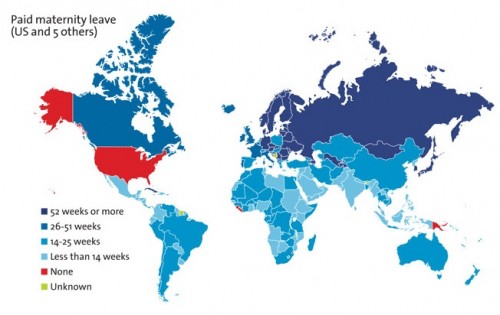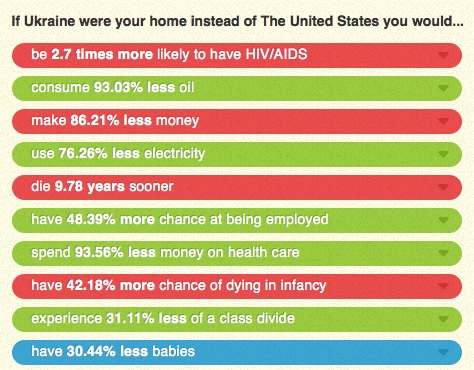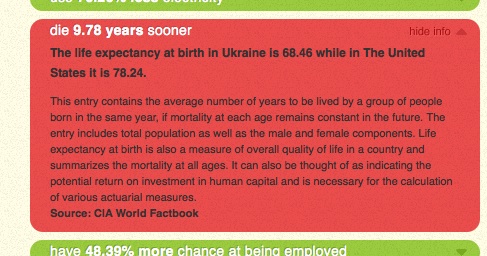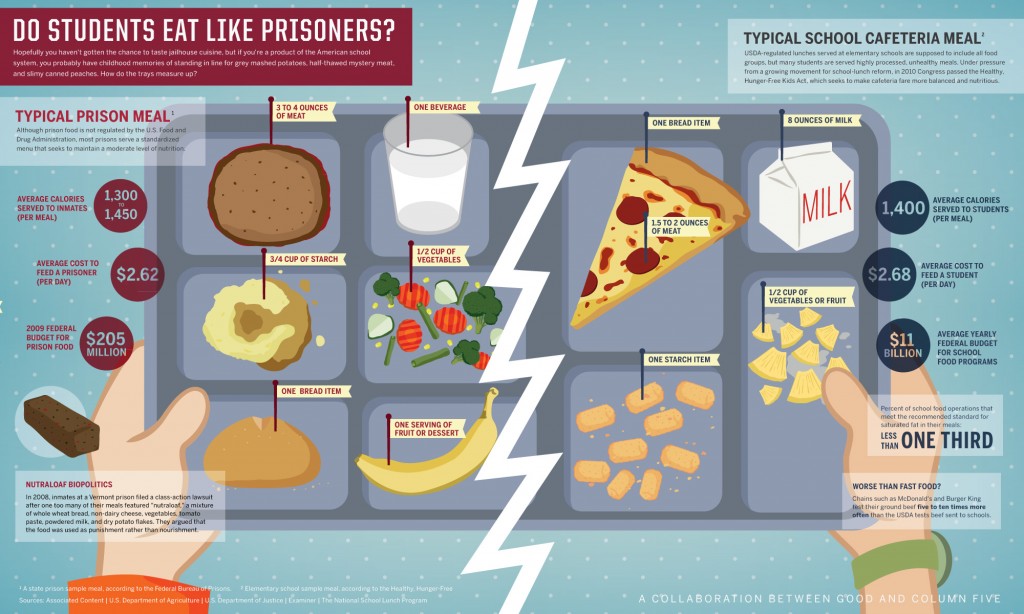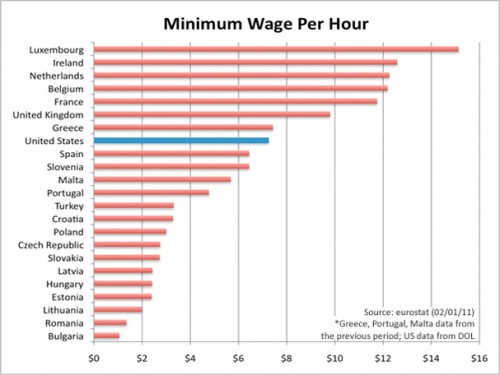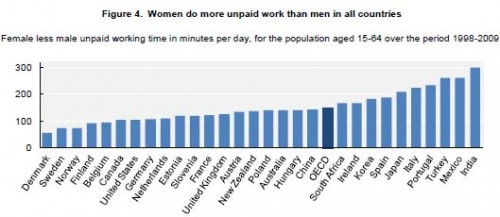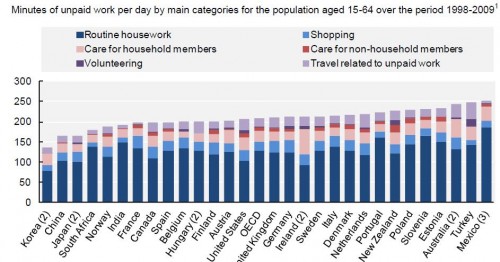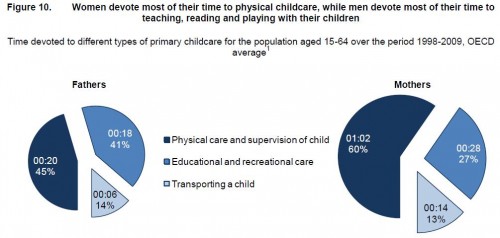Dolores R. sent us a link to some graphics at Mother Jones about work and income. There are a lot of different topics covered, but I thought I’d highlight their inclusion of some maps generated by the McGill Institute for Health and Social Policy, which gathers international data on government policies about work and family, such as requirements for paid parental leave.
This map shows how much weekly time off from work national governments have guaranteed workers (16 nations require none):
Of course, some nations, like the U.S., don’t regulate whether hourly-wage workers must have a day off each week but require they be paid at a higher rate if they work more than a certain number of hours (40 is usually the magic number in the U.S.), though this often doesn’t really apply to salaried workers, who aren’t paid by the hour.
Here’s paid annual leave (9 nations have none):
Paid maternity leave (6 nations have none):
The McGill Institute has interactive maps that let you compare global policies on a number of family-work balance issues. You can get global maps, such as these, or compare specific countries.

